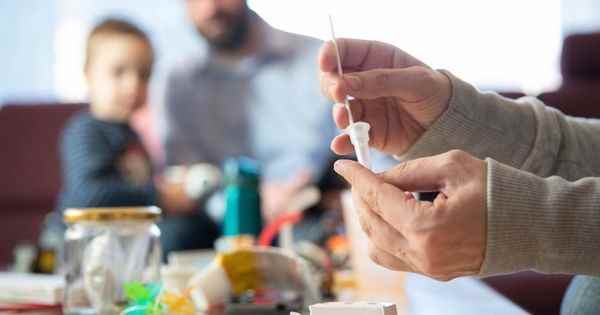Published ,
Reading 2 mins.
To spare their child a gesture that they consider too invasive, some parents have thought of finding a way out by using a baby nasal aspirator. So much so that the trick ended up making the rounds on social networks. But is it really a good idea for a Covid self-test? Obviously, no. Explanations.
The health protocol for schoolchildren consists of carrying out three self-tests within a few days: the first when it is discovered that they are contact cases, another on D+2 and a last on D+4. Three tests to be carried out in a short time, which are often unpleasant for children, but also for parents. Indeed, the latter have turned despite themselves into apprentice testers, and some of them have tried to show ingenuity to make the sample less unpleasant, thanks to the baby fly technique.
Collection in the mucus
To avoid scenes of crying and inconveniencing their child each time with a nasal swab, these parents therefore had the idea of carrying out the self-test by dipping the swab directly into the child’s mucus, taken from the fly. -baby. The trick quickly spread between parents and even made the rounds of social networks.
Some parents, who have taken this type of sample, have been convinced of the effectiveness of the method, because their children’s tests have been positive, later confirmed by another antigen test or PCR.
Beware of false negatives!
While this way of performing the test is indeed more comfortable for children, the result might not be as reliable as when the swab actually tickles the child’s nostrils. According to an expert, interviewed by our colleagues from the Destination Santé press agency, “nasopharyngeal self-tests have been authorized or even labeled on validated protocols where we will scrape cells from the epithelium (the wall that lines the inside of the nose, editor’s note), recover them and then test for the presence of virus in them . If only secretions are recovered, the result can be very different“.
Thereby, “if we are positive, we are in the infection phase, there is virus released in the mucus and therefore we can see it. There may also be factors in the mucus that reduce the sensitivity of the tests, as the protocols often call for blowing your nose before taking the sample. I don’t fear false positives, but false negatives“. Be careful not to distort the results of the test by this technique, therefore.
Consult a GP online
What about saliva tests?
Much easier to perform, saliva tests, a prescribed time for screening for Covid-19, have gradually been abandoned in favor of self-tests, which are faster to perform and have almost immediate results. But with the Omicron variant which is more and more dominant in France, they could make a comeback. According to the Minister of Health Olivier Véran, “several comparative studies are in progress” to redefine their reliability in the detection of this variant. To see if this will lead to the establishment of a new protocol for schoolchildren and their parents.
